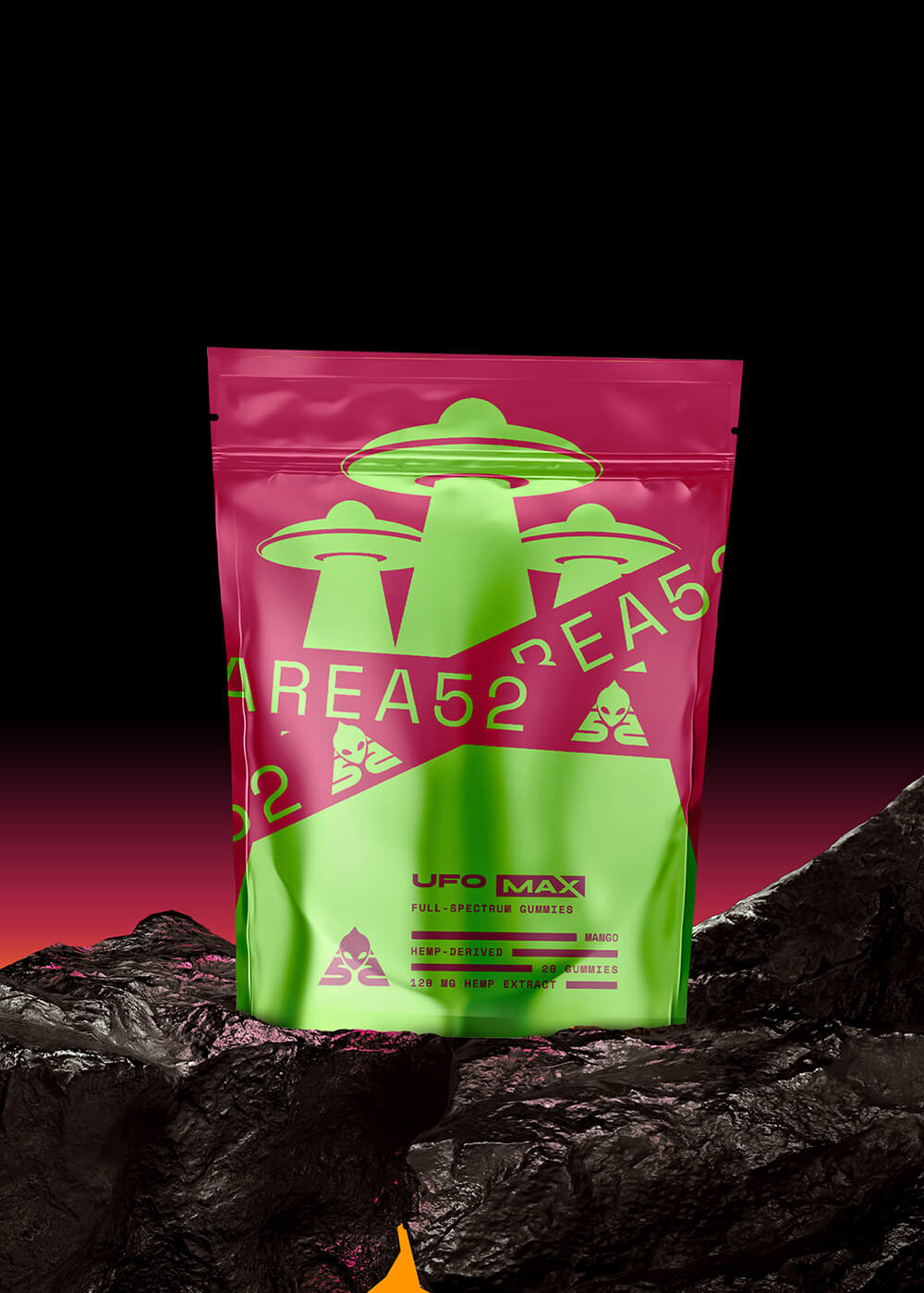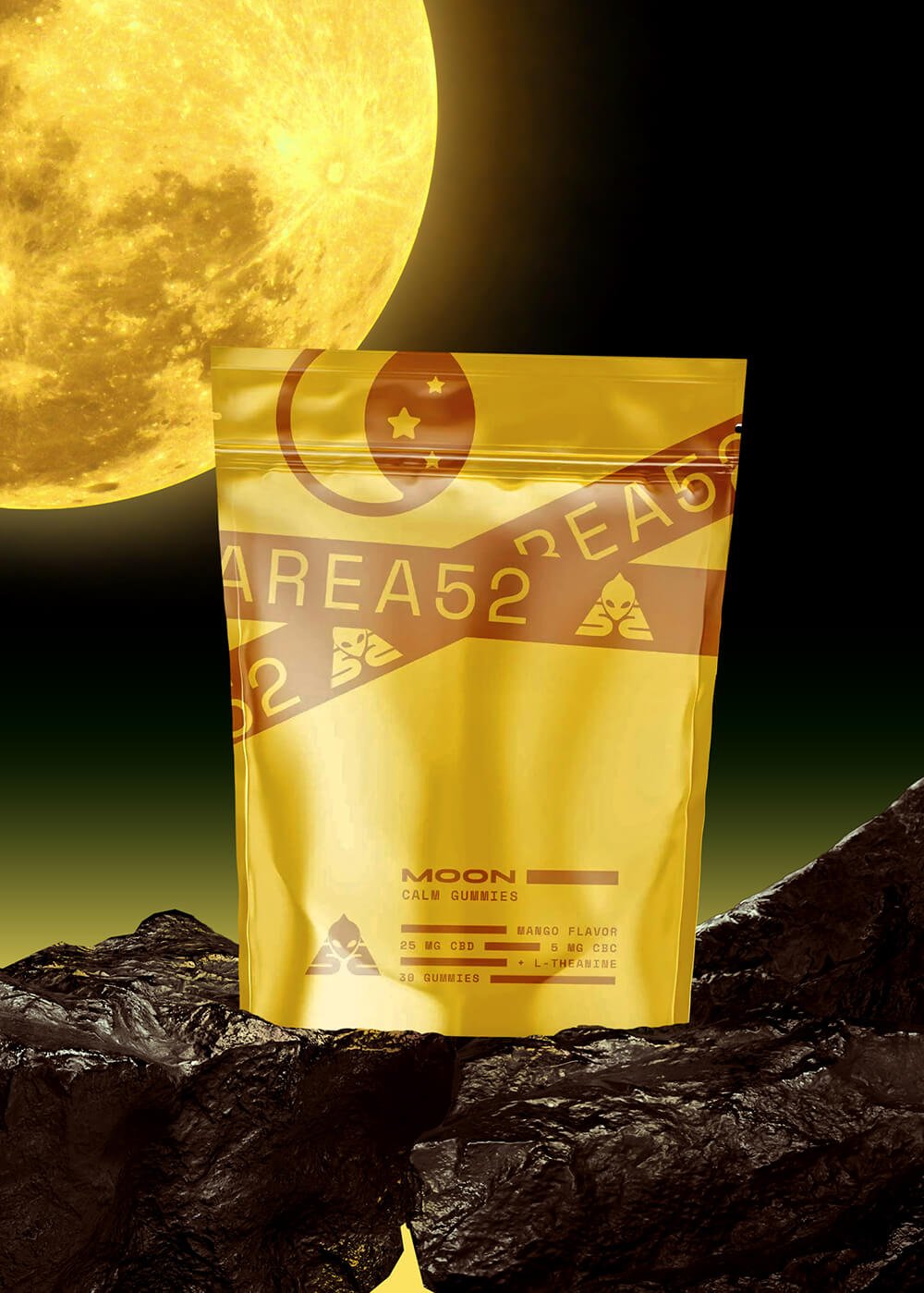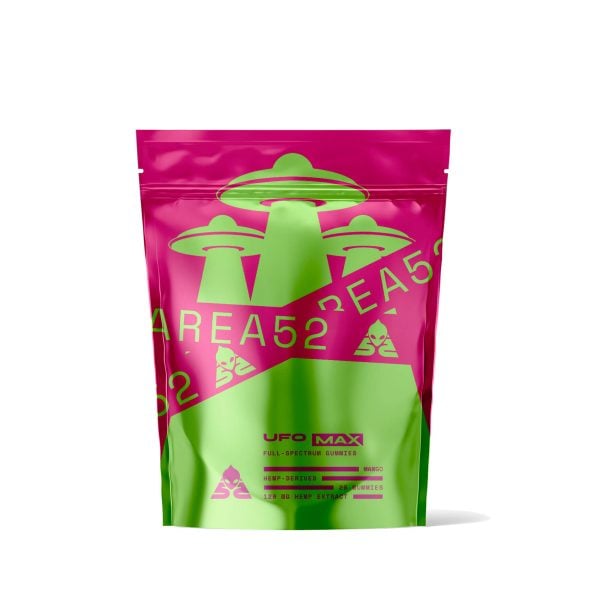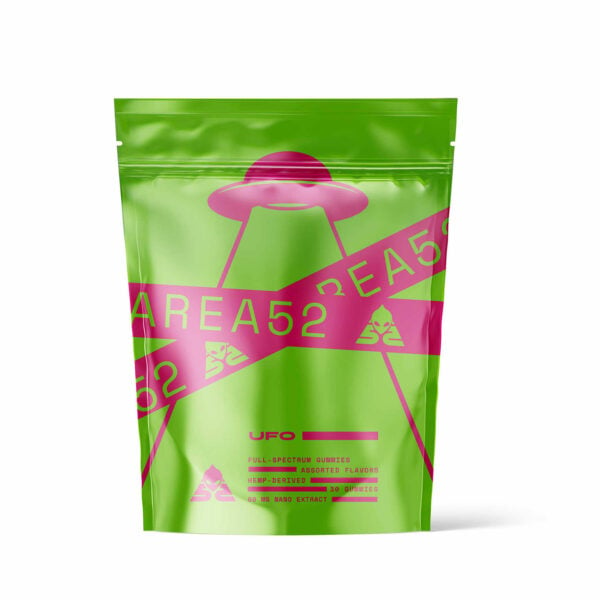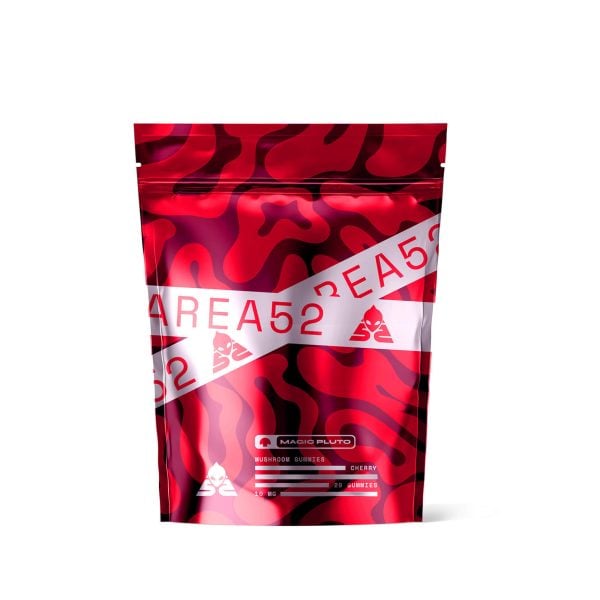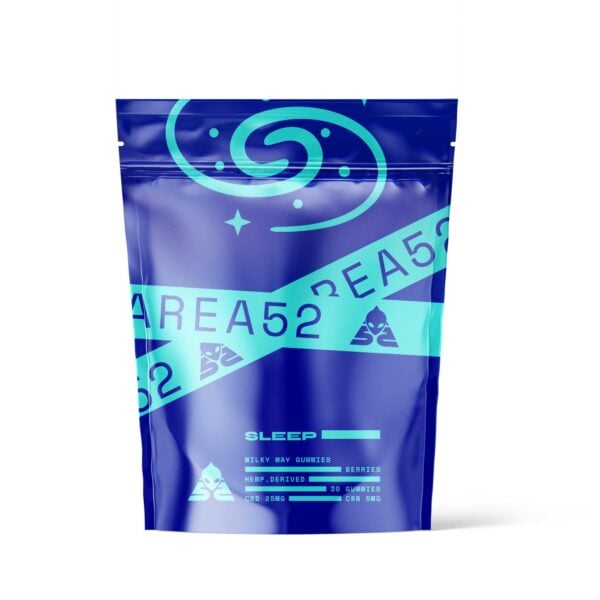What is CBC (Cannabichromene): Uses & Effects of this Cannabinoid

The 2018 Farm Bill opened the gate for cannabis preparations and natural cannabinoids to flood the market, albeit slowly. It started with CBD, which quickly became a popular go-to for those interested in natural products.
Now, we have other cannabinoids like CBG, CBN, THCV, delta 8, delta 10, HHC… we’ve lost track at this point.
But let’s shine a light on one of the lesser-known cannabinoids: CBC — short for cannabichromene. Just what is cannabichromene (CBC) anyway?
Here are all the details you need on CBC — what it is, what it does, what makes it unique, and how to buy it.
Bottom Line: What Is CBC?

Cannabichromene, or CBC, is the third most abundant cannabinoid in cannabis. It’s right up there with CBD and THC.
All three of these major cannabinoids are made from CBG, though most of the CBG converts to CBD in hemp or THC in marijuana.
Traditionally, cultivators breed these plants for high amounts of CBD and THC, respectively, even though we’ve known about CBC for decades — since 1966 to be exact.
Today we have a renewed interest in cannabinoids like CBC, thanks to the Farm Bill and the discovery of the endocannabinoid system. This interest has prompted breeders to adjust their focus to produce and breed CBC-rich Cannabis sativa plants.
Realistically, it’s going to take several more years before we see any quantitative results.
For now, CBC is extracted from hemp plants and concentrated using chromatography and distillation techniques.
Of note, cannabis plants produce CBGA (cannabigerolic acid), which is considered the “mother of all cannabinoids.” Enzymes eventually transform cannabigerolic acid into cannabidiolic acid (CBDA), tetrahydrocannabinolic acid (THCA), and cannabichromenic acid (CBCA). The plants then convert CBCA into CBC during decarboxylation.
CBC & the Endocannabinoid System
As a cannabinoid, CBC affects receptors in the endocannabinoid system (ECS), though not in the same way as THC and CBD.
Unlike THC, CBC has little interaction with the CB1 receptor, found mainly in the brain, central nervous system, lungs, liver, and kidneys. Because of this, CBC isn’t psychoactive. You won’t feel intoxicated or high, but CBC can contribute to the entourage effect when combined with CBD and THC.
Instead, CBC is more like CBD and interacts primarily with the CB2 receptor, found mostly in the immune system and also influence the anti-inflammatory process.
It’s unclear exactly how these two cannabinoids affect the ECS, but preliminary research shows CBC, just like CBD, is also able to elevate the body’s natural endocannabinoids, which are arachidonic acid derivatives. What makes CBC different is its focus on a parallel system called the vanilloid (TRP) receptors. The TRP or Transient receptor potential (TRP) channels interact with CBC to influence and modulate some physiological functions. They’re also believed to support healthy brain function.
While CBC doesn’t have many studies behind it, what we do know only encourages more research.
The Science of CBC: How It Works
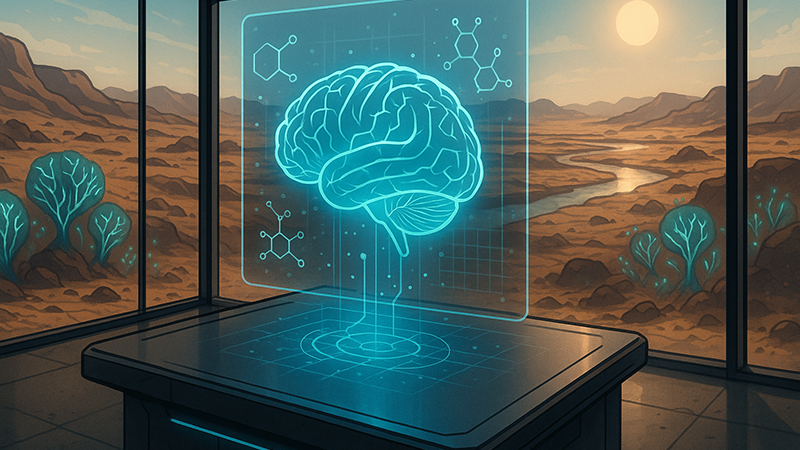
We’re not going to lie; unless you have a degree or a passion for this field, the following information might not mean much to you without a science dictionary and a lot of free time.
We add this information to provide clarity about CBC’s potential, even if we don’t have the details yet. Here’s what studies show so far:
- CBC inhibits endocannabinoid inactivation and activates the transient receptor potential ankyrin-1 and other enzymes involved in the endocannabinoid system regulation.
- CBC is a selective CB2 agonist.
- CBC interacts with TRP cation channels, including TRPA1, TRPV1–4, and TRPV8.
- CBC produces a dose-dependent cell activation in CB2 cells but without hyperpolarization in CB1 cells.
- CBC signals through the Gi/o type G proteins causing CB2 receptor internalization independent of GRK2/3 kinases.
- Research in the British Journal of Pharmacology suggests that CBC ameliorates murine colitis or improves colitis in rodents by reducing inflammation in the colon.
There is some evidence that suggests that CBC has synergy with cannabis and other hemp components that can cause an entourage effect.
By influencing these pathways, CBC may contribute to anti-inflammatory effects, pain relief, and better management of conditions involving chronic inflammation. More in-depth human studies are needed, but the initial data are fascinating for both scientists and medical professionals.
Potential Role of CBC in Cancer Cells Research
While not conclusive, some exploratory studies on cancer cells in vitro suggest CBC extract might inhibit cell proliferation. The theory is that cannabichromene modulates inflammatory markers, nitric oxide production, and even factors impacting tumor growth.
However, these findings of potential benefits are preliminary and require extensive clinical trials to confirm any direct anti-cancer benefits. For now, it’s an interesting area of ongoing investigation, especially with the interest in cannabis plant derivatives.
The next section hinges on some of these points and makes them a little clearer.
Will CBC Make Me High?
No. CBC is non-psychoactive, which means no amount of CBC will make users feel high.
THC binds to the CB1 receptor in the human brain, causing the characteristic high associated with marijuana. CBC doesn’t significantly affect the CB1 receptor and therefore doesn’t make you high.
Is CBC Legal?
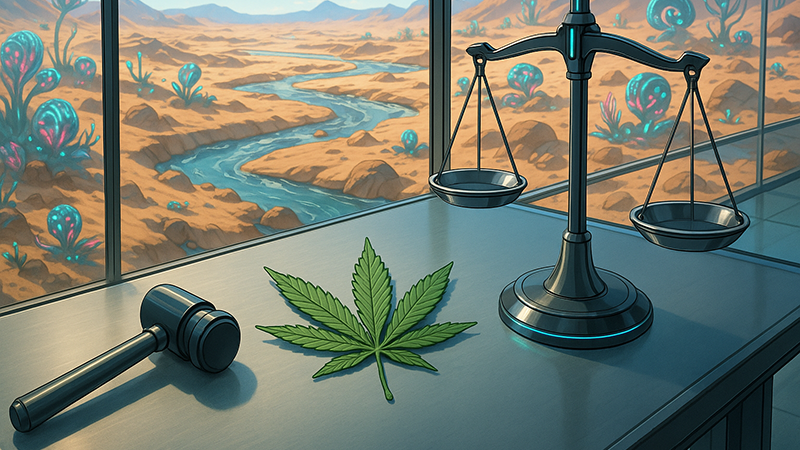
Yes, because of the 2018 Farm Bill, hemp-derived CBC is federally legal.
However, make sure to check the other ingredients before you buy. It’s common for companies to mix delta 8 THC or delta 9 THC with CBC products because of how well these cannabinoids work together.
Is CBC Safe?
So far, there’s no evidence to suggest CBC is dangerous. Studies involving large doses of CBC marked a surprising deficit of adverse effects.
Since hemp-derived cannabinoids are similar to each other, researchers use the information on THC and CBD to estimate the safety profile of CBC.
There are some side effects and dangers to using marijuana (short-term memory loss, drug interactions, anxiety, etc.). Still, it’s safe overall, and the benefits far outweigh the risks, especially compared to other prescription medications.
CBC is more comparable to CBD since neither acts as an antagonist to CB receptors but instead influences them in other ways. CBD is safe and, so far, shows great promise in many areas and is generally well-tolerated with few side effects.
CBC Side Effects
Of course, there’s always a chance some people could have an adverse reaction to it, so always start with a small amount.
Most people don’t experience side effects when using CBC in the recommended dose. Large doses could make users feel nauseous or dizzy.
Here are possible side effects of CBC:
- Nausea
- Dizziness
- Dry mouth
- Anxiousness (rare)
- Changes in heart rate (slower or faster)
- Low blood pressure
- Fatigue
As usual, avoid using CBC while pregnant and don’t mix it with other medications or alcohol.
This advice holds true for all cannabinoids.
How Do I Use CBC?
You’re most likely to find CBC tinctures, vape carts, concentrates, and hemp flowers, though flowers usually have minimal amounts.
Maybe you’ll luck out and find something else too. Companies are innovating in this space very rapidly, so you can expect to see plenty of unique CBC-based products coming to market over the next few months.
Just remember to look for those third-party tests.
The best way of using CBC comes down to personal preference, don’t be afraid to try multiple methods to find what works best for you.
Here’s a summary of the different ways of using CBC:
- CBC Vape Carts — Easy to get started, rapid onset of effects.
- CBC Tinctures — Long-lasting effects, ability to use precise dosages.
- CBC Distillate — Hard to use, but very cost-effective.
- CBC Gummies — Safe, simple, delicious.
- CBC Flower — Not readily available yet, but coming soon.
CBC Dosage
There’s not enough information on the dose of CBC to fully elucidate the optimal dose of this cannabinoid. However, from the research that is available, CBC appears to follow more or less the same dosage range as CBD.
The dose varies with each individual, and certain things like weight, tolerance, and if you’re taking it on an empty stomach or not.
Usually, people take varying concentrations, usually between 10 and 50 mg of CBC.
With that as your guide, start on the low end and increase the dose gradually over time once you’re familiar with how it affects your body individually.
How Do I Buy CBC?
CBC is hard to find — not many vendors sell it yet.
The biggest problem with CBC (as is the case with other cannabinoids) is purity. Not all manufacturers apply the level of care and attention needed to produce pure cannabinoid concentrates. Extracting CBC isn’t easy — it requires the skill and oversight of an expert chemist and plenty of high-tech testing equipment.
How can you know for sure that the CBC you’re buying is actually CBC?
The answer is third-party testing. Always check these to confirm the CBC doesn’t contain harmful contaminants like pesticides, heavy metals, or solvents.
You can also buy a broad or full-spectrum CBD oil. These will have CBC in them, though in lower amounts. Full-spectrum is ideal since CBC works better with THC, but broad-spectrum still has benefits.
How Is CBC Different From Other Cannabinoids?

All cannabinoids interact with the endocannabinoid system in one way or another.
In total, there are at least 120 individual cannabinoids, but most remain unstudied — for now. Incorporating them into medicines could stimulate or inhibit the ECS and play a significant role in health.
Each cannabinoid is unique in its effects and worth studying. Here’s a quick look at the more popular ones so you can compare them to CBC.
1. CBC vs. CBD
CBC and CBD are very similar and are used for more or less the same applications.
Most other cannabinoids bind to endocannabinoid receptors or at least influence them in a pronounced way. CBD (cannabidiol) and CBC play a different role, though researchers haven’t quite figured out how they do it; CBD seems to mimic other molecules that bind to the receptors (such as anandamide or 2-AG), enhancing their signals.
2. CBC vs. CBG
CBG (cannabigerol) is the precursor to CBC, as well as THC and CBD. It’s often called the “mother of all cannabinoids” or the “cannabinoid stem cell.”
The biggest difference between CBC and CBG is their effects on the TRP channels. CBG has very little effect, while CBC has a strong effect. CBG appears to be a strong agonist of the alpha-2 adrenergic receptor as well.
3. CBC vs. CBN
The biggest difference between CBC and CBN is that the CBN (cannabinol) is mildly psychoactive (about 10% as strong as delta 9 THC, and 20% as strong as delta 8 THC). CBC, on the other hand, has no psychoactive effects whatsoever.
Young cannabis plants have trace amounts of CBN, while older, dried plants contain more. This cannabinoid forms as THC breaks down (some delta 9 THC converts to delta 8 THC; the rest turns into CBN).
Some speculate CBN is the reason old weed can make you more tired. There may be some truth to that, but it’s more likely due to how CBN works with THC.
Little else is known about this cannabinoid, except that it binds to CB1 and CB2 receptors and possibly interacts with other systems. Its interaction with the CB1 receptor is minimal, and therefore it’s not psychoactive.
4. CBC vs. Delta 9 THC
CBC is very different from THC, but both cannabinoids appear to have strong synergy when used together. If you take CBC with THC, you’re going to feel the psychoactive effects stronger, faster, and longer compared to using THC all by itself.
THC, or delta 9, is by far the most popular and the most studied cannabinoid.
Unfortunately, this binding ability is also the reason why marijuana is a Schedule 1 Drug federally and in many states.
5. CBC vs. Delta 8 THC
Delta 8 is molecularly similar to delta 9 and has many of the same effects but there are also some differences between these two.
Just like delta 9 THC, CBC may boost the effects of delta 8. This is why it’s so common to find delta 8 THC products formulated with CBC already — usually in a ratio of about 1:1 or 1:2.
We often mix our delta 8 THC with CBC tinctures for this reason.
Delta 8 THC binds to both CB1 and CB2 receptors but has an affinity for CB2 — making it slightly less psychoactive but also more relaxing and clear-headed than delta 9 THC.
Both CBC and delta 8 THC are primarily made from hemp and therefore legal throughout the continental United States.
6. CBC vs. Delta 10 THC
Delta 10 is another cannabinoid that’s gained a lot of attention lately.
It’s like delta 8 and delta 9, but less potent and more energizing. It binds to the same receptors and offers the same types of benefits. CBC also appears to boost the effects of delta 10 the same way it does for other forms of THC.
The high is similar to delta 8’s, but it’s better for daytime use or whenever you need a jolt. Delta 8 is better for relaxing, and delta 9 is perfect only if you have nothing else to do.
Learn More: Differences between Delta 8 and Delta 10 THC
7. CBC vs. THCV
Tetrahydrocannabivarin, or THCV, sounds like it should behave like THC and delta 8 THC, but it doesn’t. In fact, it’s the opposite. It turns off the CB1 receptor instead of binding to it.
This makes THCV energizing instead of calming, isn’t psychoactive, and may have a negative impact on appetite.
CBC and THCV are similar in their abilities to interact with the TRP channels. CBC is thought generally considered the best non-psychoactive option for nerve health, while THCV is the best psychoactive option. These cannabinoids work great in combination with each other for this reason.
What is the Endocannabinoid System?
The endocannabinoid system (ECS) is an intricate network spread throughout every major system in the body. This system is essential for any living being with a nervous system. It’s present in all animals, not just humans.
The role of the ECS is to keep everything in balance; it regulates things like pain perception, appetite, memory, the reproductive system, the immune system, motor activity, coordination, stress, hunger, and the cardiovascular system.
The ECS acts as a communication network between the internal organs. It also helps maintain internal balance in the the human body.
Final Thoughts: Is CBC Worth Trying?
CBC is one of the many cannabinoids just starting its time in the spotlight, and each shines differently.
As new products come out, it’ll be easier to pick and choose what benefits you want to focus on, essentially giving you the power to formulate personalized hemp extract blends. Its early research suggests anti-inflammatory properties and synergy with THC that can help with certain medical conditions.
If you want to try it out, make sure it’s lab-tested. Don’t waste your money or risk your safety on inferior or dangerous CBC.
Frequently Asked Questions
1. What is the use of Cannabichromene?
Many people use CBC for potential anti-inflammatory support, mood enhancement, and synergy with THC or CBD. Though not fully proven, anecdotal evidence points to stress relief and possibly aiding healthy brain function.
2. Does cannabichromene show up on a drug test?
Standard tests typically screen for THC and its metabolites, not CBC. Nonetheless, if the CBC product contains trace THC, it could yield a positive result.
3. What happens to your brain cells when you take CBC?
Early research indicates CBC may support healthy brain function by boosting the body’s natural ability to generate new cells, but more studies on human brain tissues are needed.
4. Can CBC cause psychosis or anxiety?
Not typically. Unlike high-THC products, CBC rarely prompts severe anxiety or psychosis. However, individual responses vary, so always start low and go slow.
5. What’s the difference between CBD and CBC cannabinoids?
Both are non-intoxicating, but CBC interacts more with the transient receptor potential channels, while CBD is known for modulating endocannabinoid reuptake. They can be used together though to maximize the entourage effect.
References:
- Patil, A. S., Mahajan, U. B., Agrawal, Y. O., Patil, K. R., Patil, C. R., Ojha, S., … & Goyal, S. N. (2020). Plant-derived natural therapeutics targeting cannabinoid receptors in metabolic syndrome and its complications: A review. Biomedicine & Pharmacotherapy, 132, 110889.
- Izzo, A. A., Capasso, R., Aviello, G., Borrelli, F., Romano, B., Piscitelli, F., … & Di Marzo, V. (2012). Inhibitory effect of cannabichromene, a major non‐psychotropic cannabinoid extracted from Cannabis sativa, on inflammation‐induced hypermotility in mice. British journal of pharmacology, 166(4), 1444-1460. [2]
- Udoh, M., Santiago, M., Devenish, S., McGregor, I. S., & Connor, M. (2019). Cannabichromene is a cannabinoid CB2 receptor agonist. British journal of pharmacology, 176(23), 4537-4547. [3]
- Marcu, J. P. (2016). An overview of major and minor phytocannabinoids. Neuropathology of drug addictions and substance misuse, 672-678. [4]
- Udoh, M., Santiago, M., Devenish, S., McGregor, I. S., & Connor, M. (2019). Cannabichromene is a cannabinoid CB2 receptor agonist. British journal of pharmacology, 176(23), 4537-4547. [5]
- Izzo, A. A., Capasso, R., Aviello, G., Borrelli, F., Romano, B., Piscitelli, F., … & Di Marzo, V. (2012). Inhibitory effect of cannabichromene, a major non‐psychotropic cannabinoid extracted from Cannabis sativa, on inflammation‐induced hypermotility in mice. British journal of pharmacology, 166(4), 1444-1460. [6]
- Vriens, J., Nilius, B., & Voets, T. (2014). Peripheral thermosensation in mammals. Nature Reviews Neuroscience, 15(9), 573-589. [7]
- Wang, R., Tu, S., Zhang, J., & Shao, A. (2020). Roles of TRP Channels in Neurological Diseases. Oxidative Medicine and Cellular Longevity, 2020. [8]
- Shinjyo, N., & Di Marzo, V. (2013). The effect of cannabichromene on adult neural stem/progenitor cells. Neurochemistry international, 63(5), 432-437. [9]
- Bond, A. M., Ming, G. L., & Song, H. (2015). Adult mammalian neural stem cells and neurogenesis: five decades later. Cell stem cell, 17(4), 385-395. [10]
- Maione, S., Piscitelli, F., Gatta, L., Vita, D., De Petrocellis, L., Palazzo, E., … & Di Marzo, V. (2011). Non‐psychoactive cannabinoids modulate the descending pathway of antinociception in anesthetized rats through several mechanisms of action. British journal of pharmacology, 162(3), 584-596. [11]
- Oláh, A., Markovics, A., Szabó‐Papp, J., Szabó, P. T., Stott, C., Zouboulis, C. C., & Bíró, T. (2016). Differential effectiveness of selected non‐psychotropic phytocannabinoids on human sebocyte functions implicates their introduction in dry/seborrhoeic skin and acne treatment. Experimental dermatology, 25(9), 701-707. [12]
- El-Alfy, A. T., Ivey, K., Robinson, K., Ahmed, S., Radwan, M., Slade, D., … & Ross, S. (2010). Antidepressant-like effect of Δ9-tetrahydrocannabinol and other cannabinoids isolated from Cannabis sativa L. Pharmacology Biochemistry and Behavior, 95(4), 434-442.
- Metna‐Laurent, M., Mondésir, M., Grel, A., Vallée, M., & Piazza, P. V. (2017). Cannabinoid‐induced tetrad in mice. Current Protocols in Neuroscience, 80(1), 9-59. [14]
- Larsen, C., & Shahinas, J. (2020). Dosage, efficacy, and safety of cannabidiol administration in adults: a systematic review of human trials. Journal of clinical medicine research, 12(3), 129.[15]
- Alger, B. E. (2013, November). Getting high on the endocannabinoid system. In Cerebrum: the Dana forum on brain science (Vol. 2013). Dana Foundation. [16]
